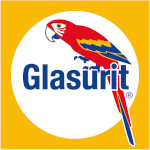Coolant
[Updated June 2023]
Coolant - what are the choices?
Technology moves forward and new products are constantly being launched with claims to improved formulations and performance. There are some alarming stories around with relation to the use of some of these in historic vehicles which go beyond the well-known tendency of antifreeze to find the tiniest hole and cause leaks and in some cases lead to catastrophic engine problems.
Traditional blue-coloured ethylene-glycol is a toxic but highly effective antifreeze and contains silicates as an inhibitor to help prevent corrosion in an engine with mixed metals in its make-up.
Bluecol and Blue Star are well known brand names and both of these are declared suitable for ‘classic cars’ on their company websites. Halfords also sells this type of anti-freeze with its own branding.
Be aware that there are also low- or no-silicate ethylene glycol formulations (usually red) available which may not be suitable for all engines.
Propylene glycol is another well-known and less toxic antifreeze formula and usually contains silicates but Comma, the main manufacturer, has now discontinued it in favour of an ethylene-glycol product containing ‘bittering agents’ to make it less palatable and minimise the risk of accidental poisoning.
Both of the above products use inorganic additive technology (IAT).
Recently problems have been reported concerning the use of antifreeze mixtures using organic acid technology (OAT). OAT was introduced in the mid-1990s and the products are biodegradable, recyclable and do not contain either silicates or phosphates and are designed to be longer lasting. However these products do seem to cause problems in older engines.
Over and above the ability of antifreeze to find the smallest crevice and leak, OAT antifreezes have been accused of destroying seals and gaskets and causing a great deal of damage in ‘old’ engines. For this reason the manufacturers do not recommend their use in historic vehicles. These products are usually coloured red, pink or orange.
The final category is HOAT. These products use hybrid organic acid technology (HOAT) in an ethylene-glycol base with some silicates in the formulation alongside the organic corrosion inhibitors. The product is usually coloured green and is not recommended for use in historic vehicles.
Thus the FBHVC advice remains:
• Only use, IAT antifreeze usually coloured blue, but can be green in historic vehicles
• Only use OAT products (‘advanced’ or ‘long life’ antifreeze) if the vehicle used it when new and if specifically directed by the vehicle’s manufacturer
• Never mix different types of antifreeze without thoroughly flushing out the system
• Always use the correct amount of anti-freeze for year-round protection and replace the coolant within the time scale specified by the antifreeze manufacturer, as the corrosion inhibitors deplete over time
Product labels state that the radiator should be drained and flushed, the hosepipe suffices rather than proprietary flushing liquids, every two years.
There does seem to be some confusion however over the colouring of antifreeze in that traditionally ethylene-glycol containing IAT corrosion inhibitors were dyed blue, but it seems that in the USA and some companies in Europe are dying the IAT antifreeze green. See Total Energies’ product range and advice, reproduced below.
Total Energies
Unsure what antifreeze you need? Multiple types of antifreeze are available, with each using a different type of corrosion inhibitor. This is indicated by a coloured dye:
| Technology | Formulation | Colour |
| IAT (Inorganic Additive Technology) | Silicates | Green |
| OAT (Organic Acid Technology) | Organic Acids | Orange |
| HOAT (Hybrid OAT, Phosphate-free) | NAP-free | Turquoise |
| HOAT (Hybrid OAT) | Silicates and organic acids | Yellow |
| Si-OAT (Silicated HOAT) | Silicates and organic acids | Purple |
| P-HOAT (Phosphated HOAT) | Phosphates and organic acids | Blue or pink |










